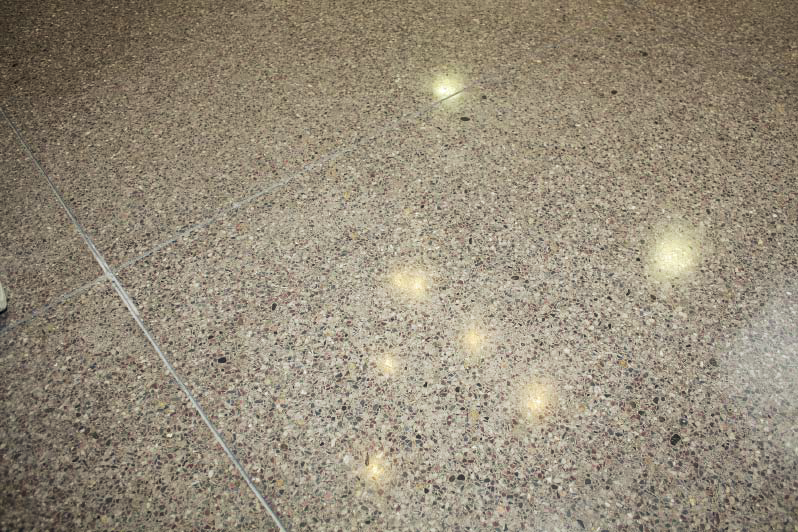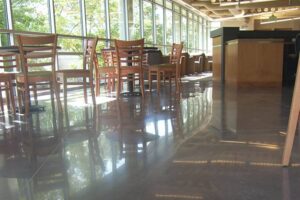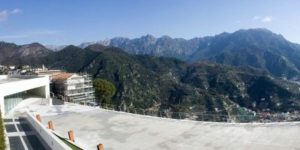
We all are aware of how important a role architects play in our industry. They are the ones advising municipalities and every type of building owner. As architects learn more about what we can do with a concrete surface they are becoming very intrigued with how much they can do.
I have a company that sells polishing tools and I am director of a polishing training school, but I figured it would be pretty smart to discuss trends in architectural polishing with an actual architect. I decided to contact Tim Jewett, AIA , from Dykeman, a Seattle-area firm. Tim is the managing principal for Dykeman and has a lot of experience specifying polished concrete and designing polished floors for installation.
We discussed architectural polishing trends and what he and his team are doing these days. This is what we observed.
The easiest trend to recognize is the use of color dyes. The simplicity of using translucent penetrating dyes with polished concrete has been a great marriage. Many architects are finding the use of color on the floor can add excellent and unique effects. Dye can be used in schools to highlight areas with school colors, in commercial structures to direct the flow of traffic, and in retail environments, residential environments and everything in between.
As with anything there are some challenges. UV light can cause fading so some care must be used to select the correct products. Also, a lot of dyes use acetone as the carrier of the product. Acetone is quite flammable, but it is an exempt product and has no negative bearing on LEED points. There are also some quality water-based dyes on the market. The ability to successfully dye concrete has made many architects lean towards using color.
The use of color has lead to another trend that is gaining more and more ground, the use of graphics. Graphics and color dye have opened the door to just about anything from a simple one-color logo to multicolored, intricately designed pieces of art. Imagine a Persian rug dyed into the entrance of your home, a multiple-color company logo in a commercial building, a ribbon of phrases in a long municipality hallway. Graphics and color dye with polished concrete has given the ability to designers to run with their imagination.
Just about any design you can think of can be cut into a stencil. Every time I have showed architects the abilities we have with stenciling and dyeing they become enthused. They have the tools they need to create.
Tim and I also spoke of how to install a better-than-terrazzo polished concrete surface. I was lucky enough to work on such a project with a polished concrete installer I was consulting for, Lundeen Simonson, based in Spokane, Wash.
The project was for Columbia Basin College, in Pasco, Wash. They wanted to have a polished concrete surface with all the polished concrete benefits, but grinding down the surface to expose aggregate was not what they were looking for. They wanted a uniform and specific mix similar to terrazzo. Working with the architect, a design was put together utilizing an integral-color dye and a multicolored mix of trap rock. The dye was added to the concrete mix and the stones were broadcast at the time of placement. There was no need for a topping slab or an additional material like epoxy or engineered cement. No extra weight and no exuberant costs.
The value of education
While we were speaking, Tim mentioned something I have noticed as well. The trends in architectural polishing have been directed by education. What I mean is, if someone explains to the firm what can be done, they can incorporate it. If the only knowledge the architect has is the basic knowledge of polished concrete, that is all he can work with. If the same architect is educated on color, graphics, decorative cuts and so on, his design capabilities are endless.
Take a moment and follow how the architect came to specify polished concrete. Everything starts from the presentation that is given to the architect from someone, usually a chemical company representative. They are the source who educates the architect. That person’s knowledge level and what he or she is trying to sell directly drives what the architect will learn. Trends in architectural polishing are started at this point.
It is funny that just now, while I was writing this article, I received a call from an architect in eastern Washington. The call was about a polished project that has been done in two phases separated by a control joint. One phase was done by my former company and another phase by the lowest bidder for that section. The question was, why does one side looks very nice and the other not very good? They are both the same spec and the same system placed by certified applicators. The architect has spoken to the chemical company about the issues and they have explained the issues are not the chemical but the quality of installation. The quality and appearance of the polished floor is determined by the polishing professional, not the chemical.
This architecture firm has a good concept of concrete polishing but has come to the realization that they need a lot more information. There are many factors involved in a successful project such as the condition of the concrete (a subject on its own) and especially the skill and experience of the craftsmen. Only they can deliver a successful outcome.
This leads to what I think is the most important trend in architectural polishing, the need for installation information from sources who are not selling a product.
Architects are hungry for polishing organizations and professional installers to teach them how to deliver a successful project. They want to learn how to write a clear and proper specification. What factors determine a well-placed and finished pour, and how should that pour cure? What techniques for grinding are best and how many steps should be taken? What happens when steps are skipped and guard is dumped on the surface? What’s the difference between a sweeper with a diamond brush or pad and a professional machine using proper tools?
The architects who are specifying a project want to deliver a great product for their client — so everything starts with the education of the architect. The more design firms know, the more they can do. If we put effort into building our industry from the starting point we will receive the benefits in the end. Can you imagine working on projects where the architects specified great concrete placement and wrote clear specifications?
As an industry we need to stop complaining so much about poor specifications, poor concrete placement and lack of understanding of the process — and while we’re at it, the issue of burnished, pad-polished and brush-polished concrete versus true professional polished concrete. The way to stop the dumbing down of the industry is through proper education at the beginning. To change this, we need to put effort into the front end instead of waiting for the back end. The time has come for you to stop relying on someone else and get out and educate.
















